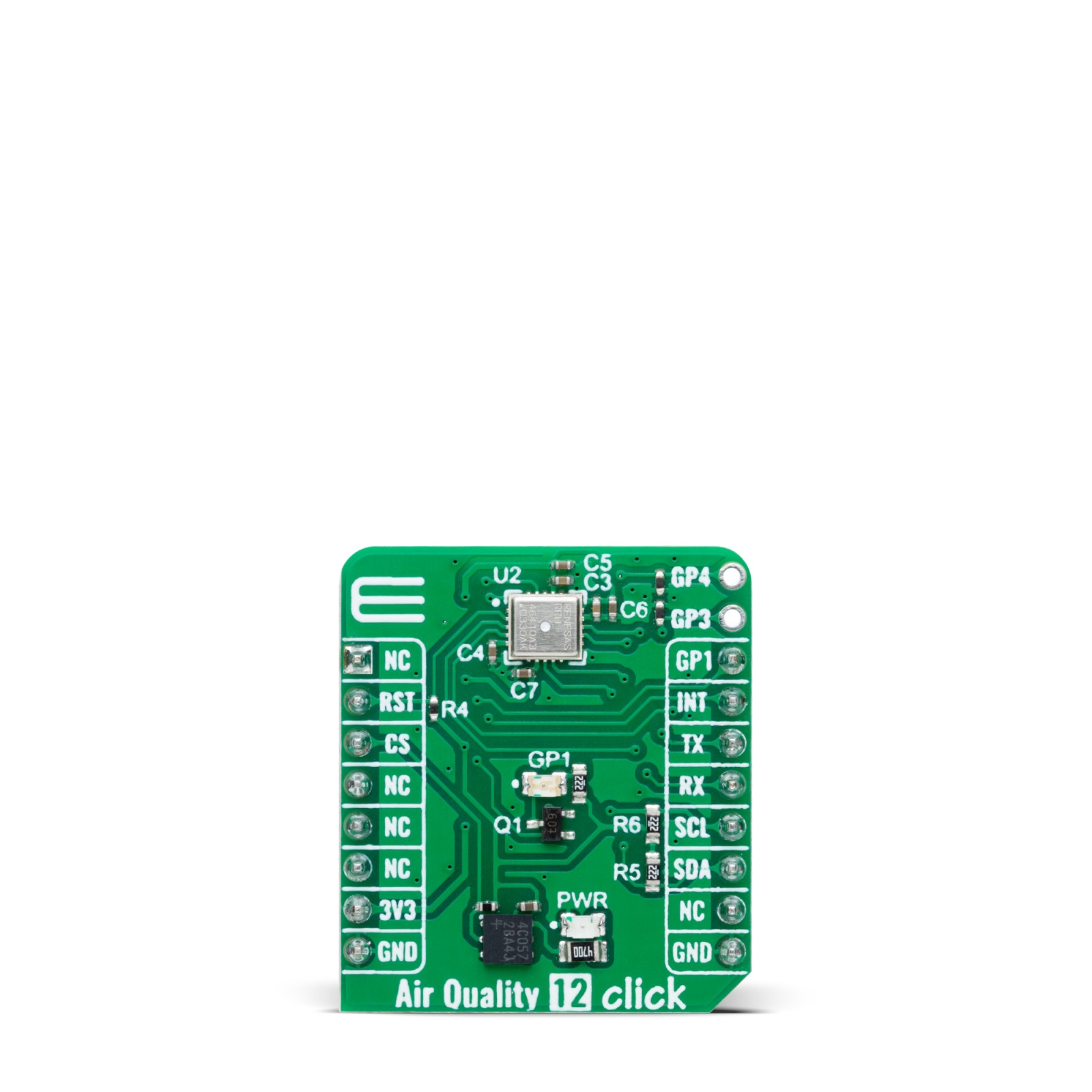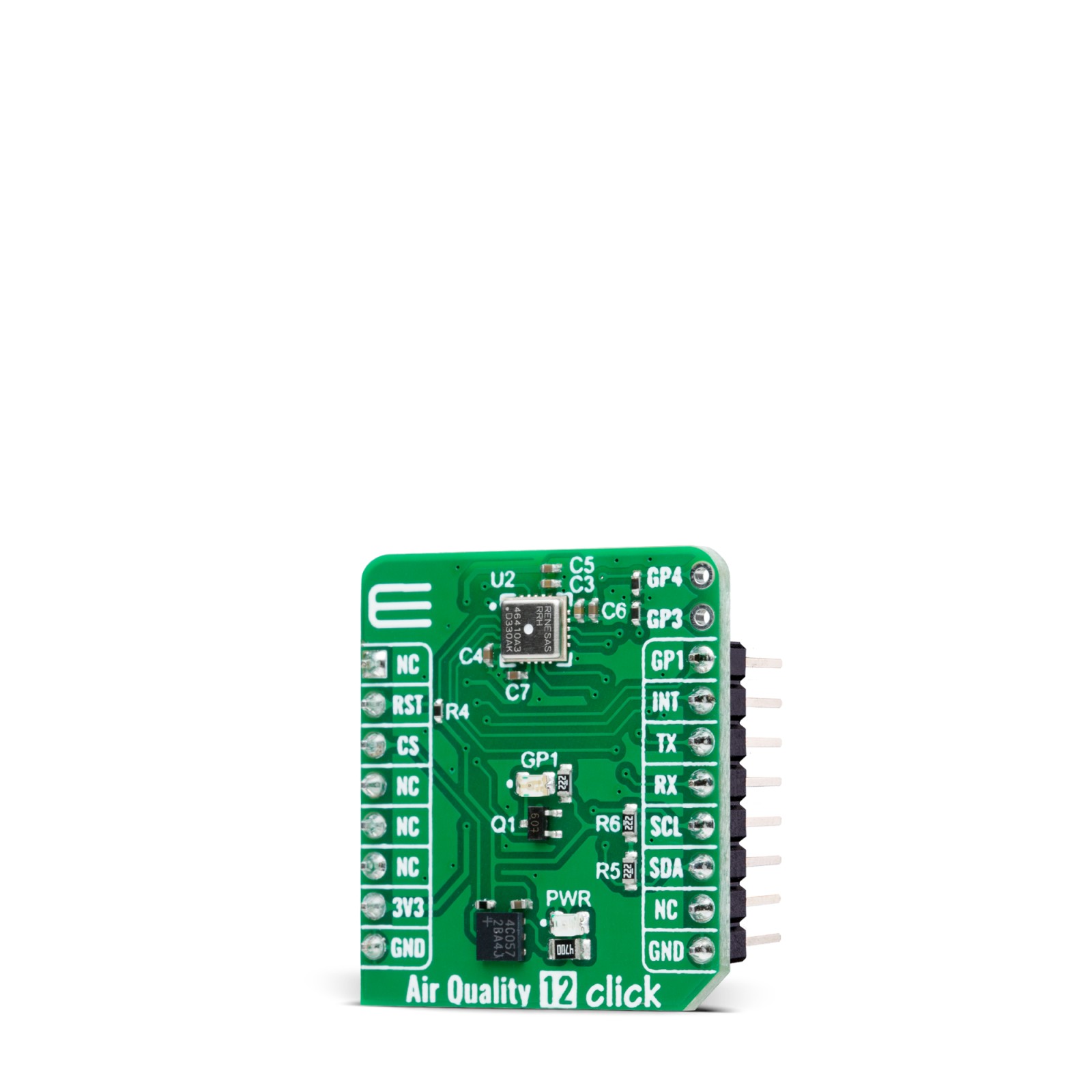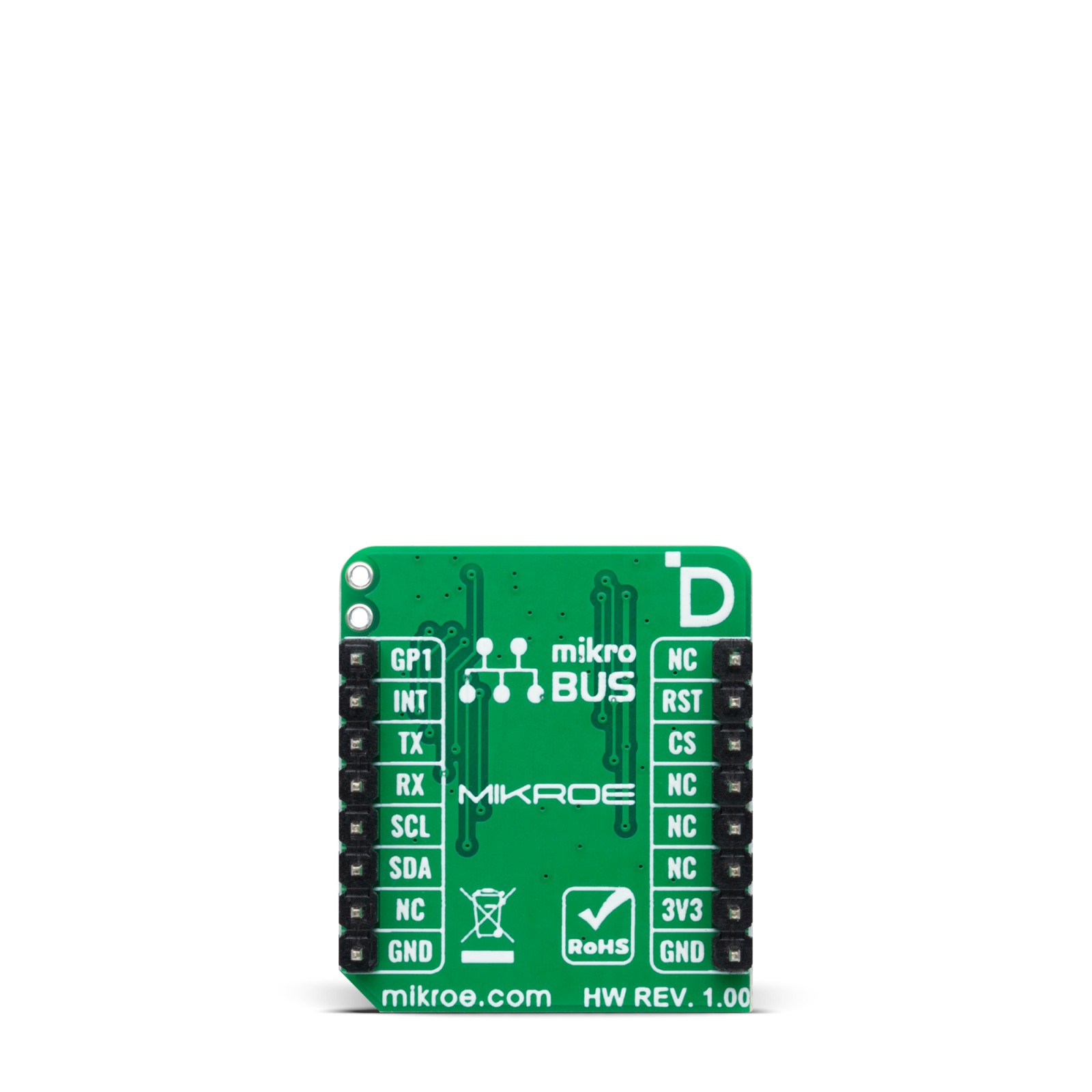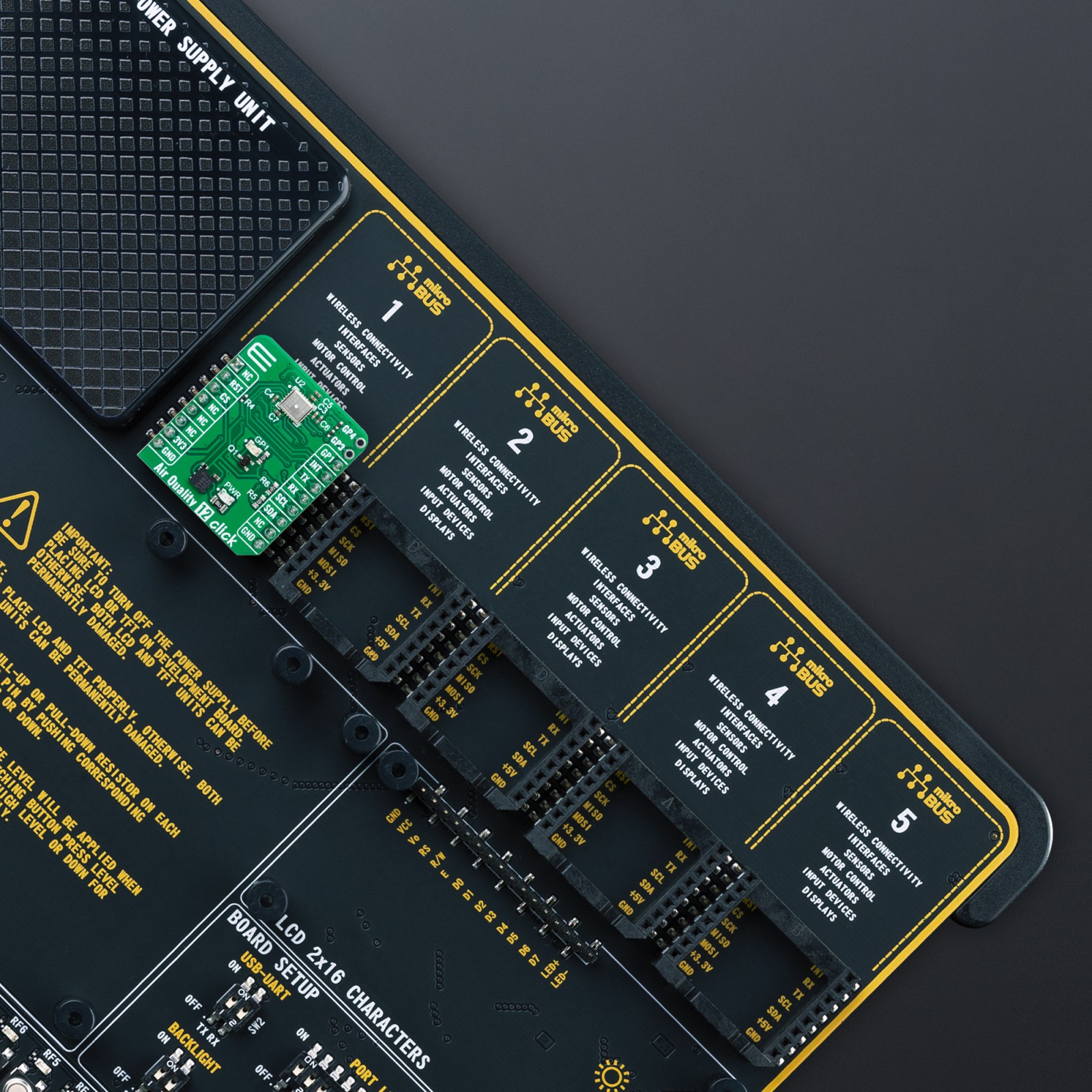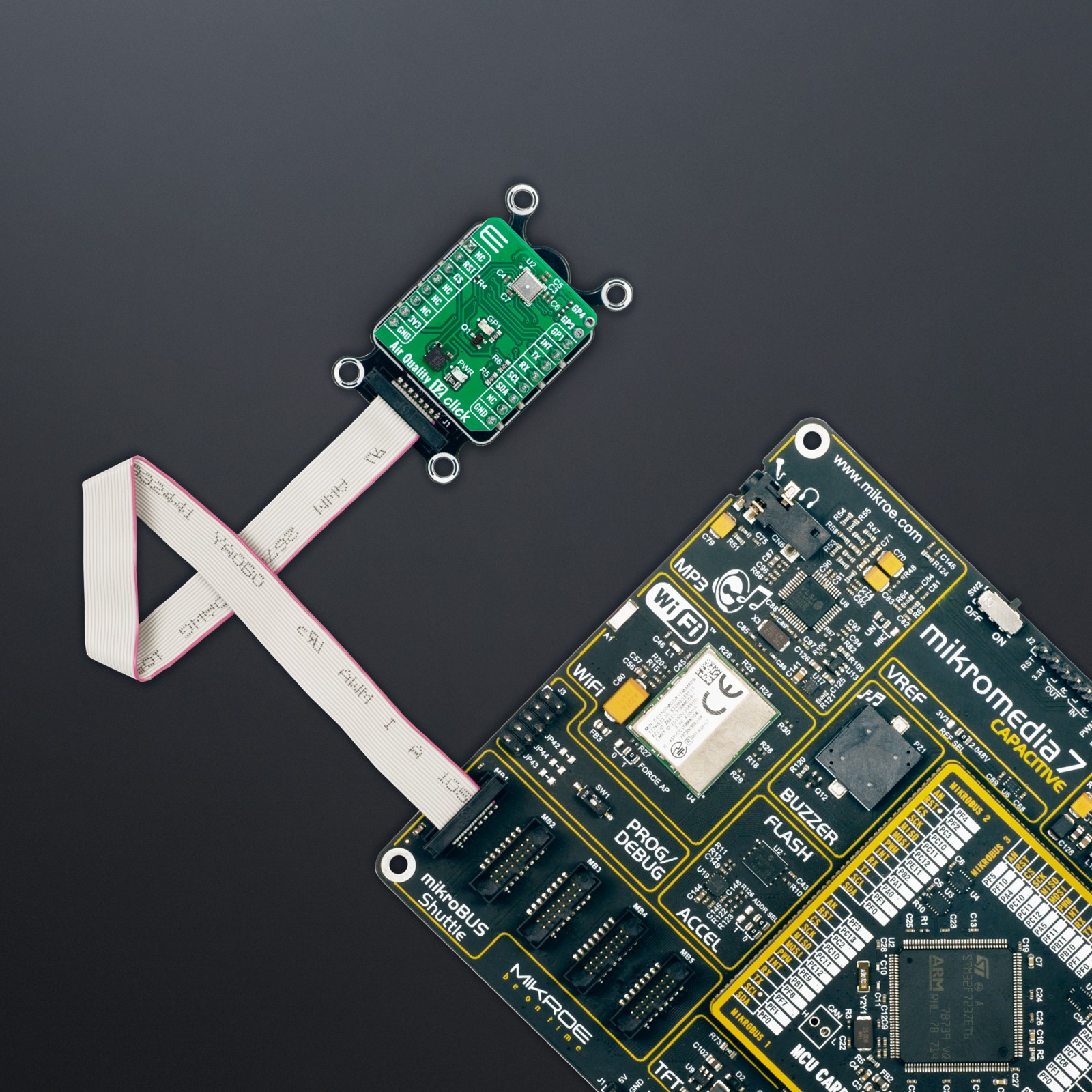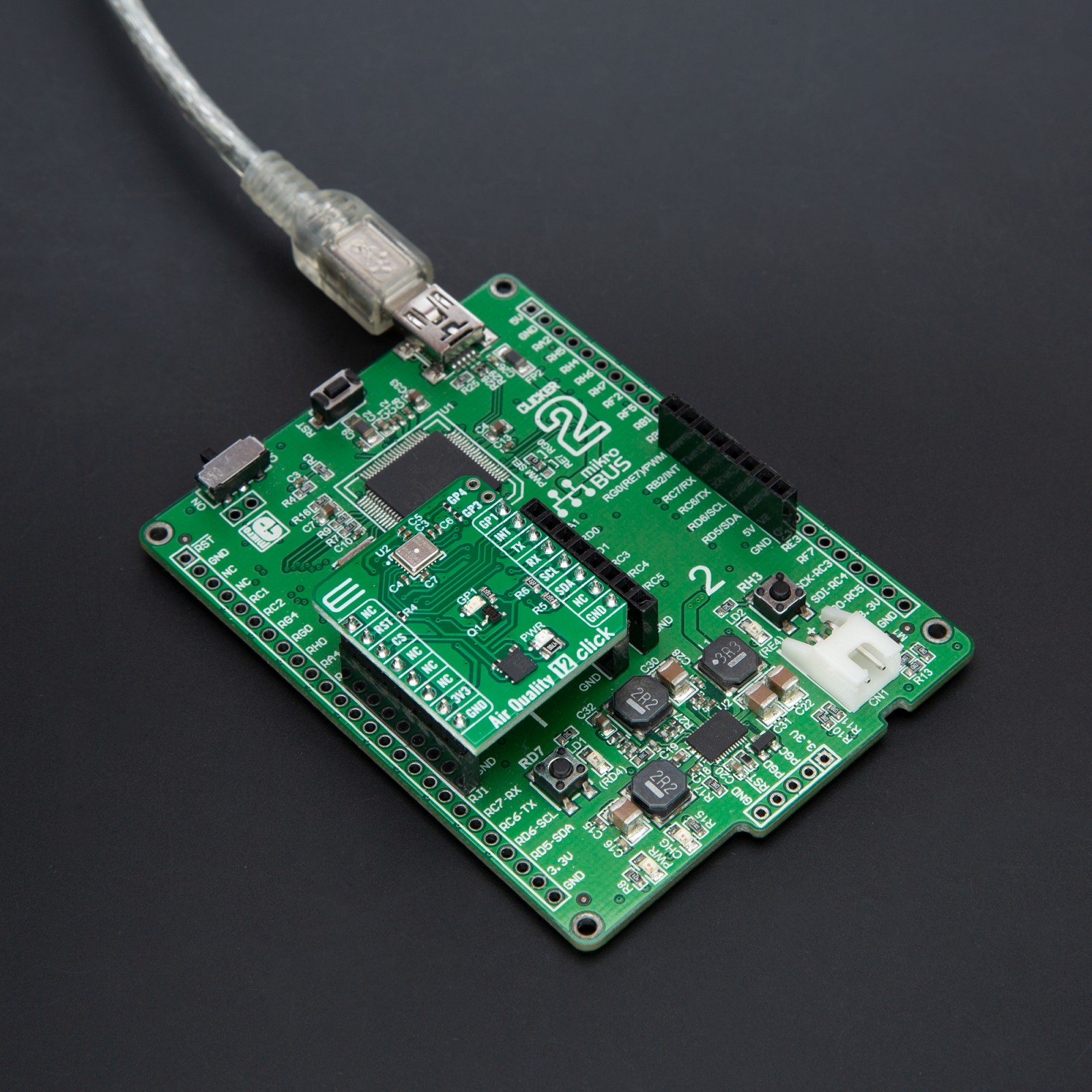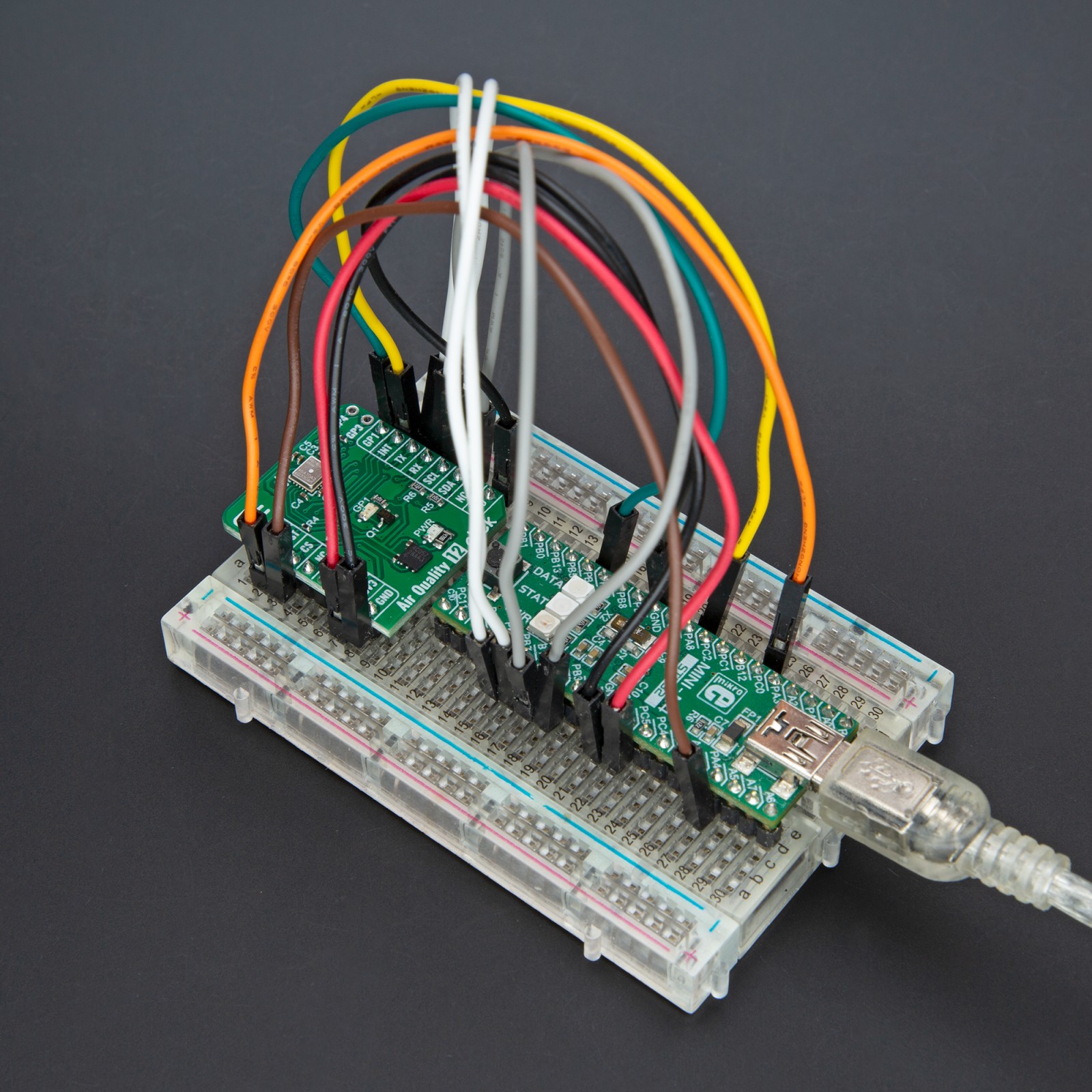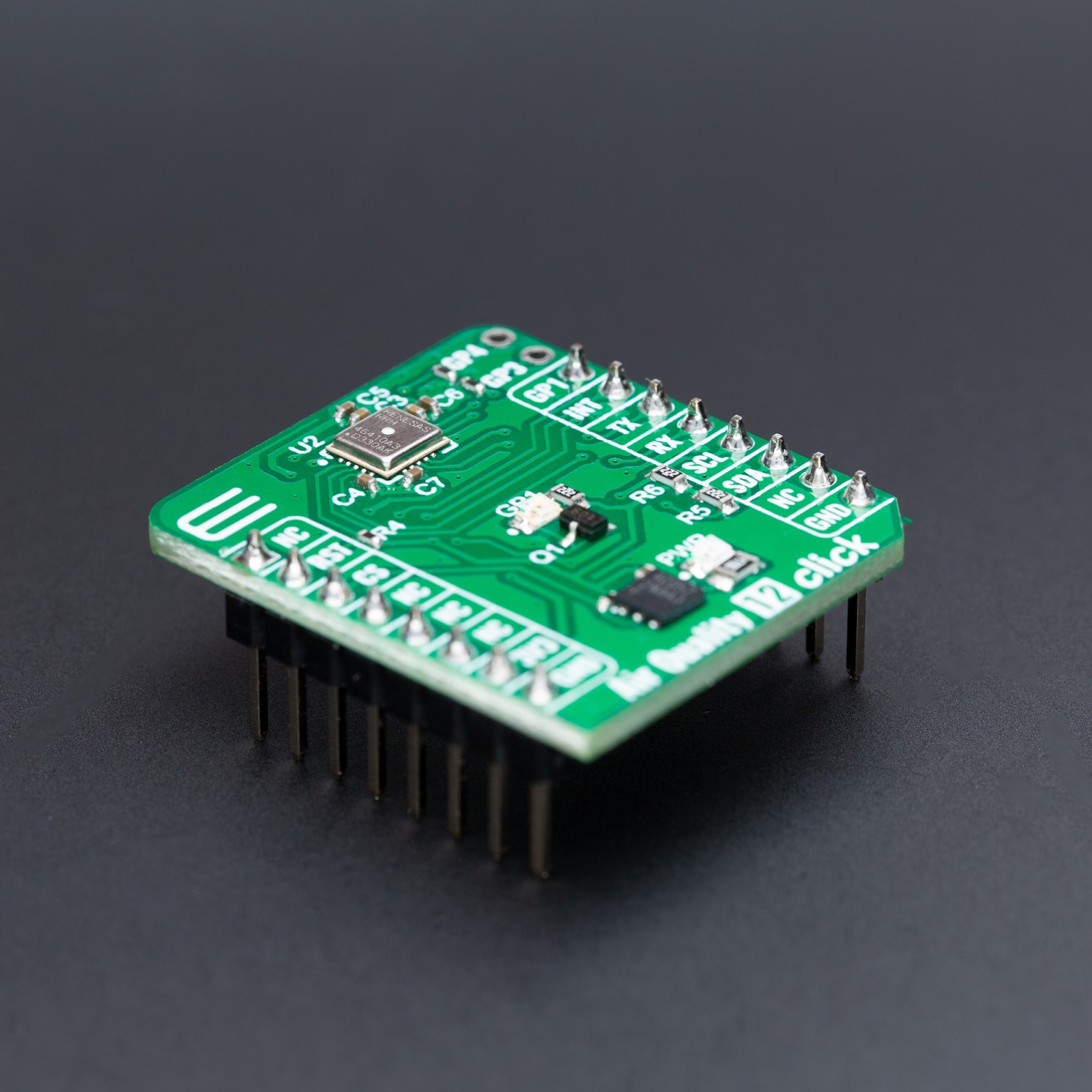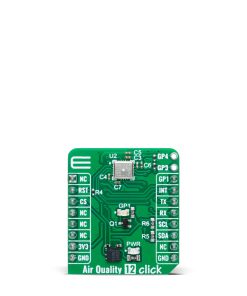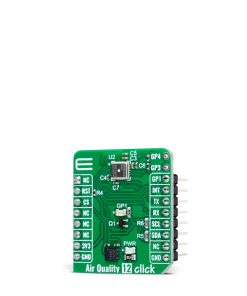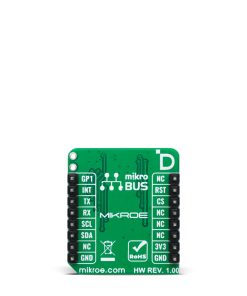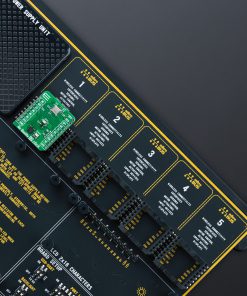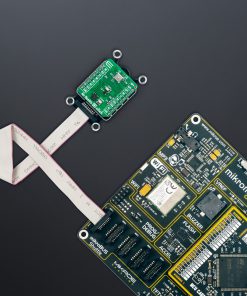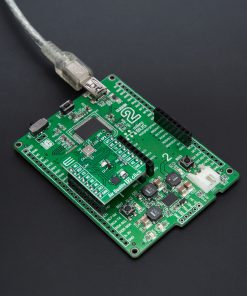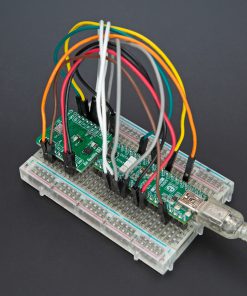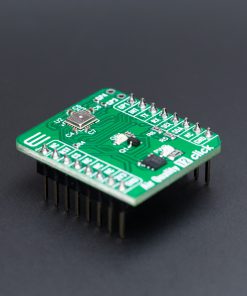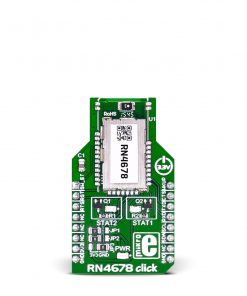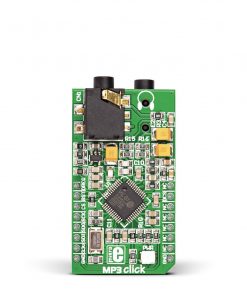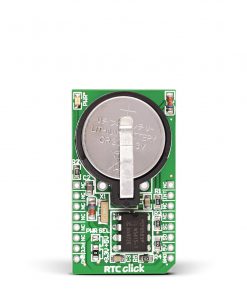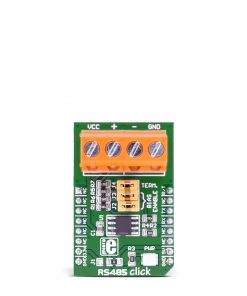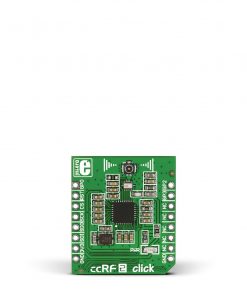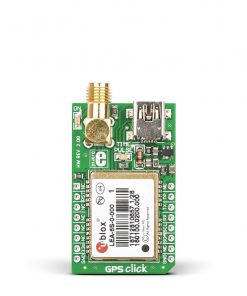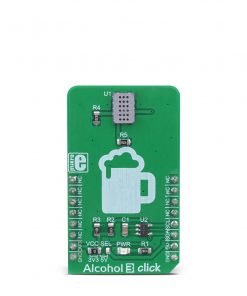Subtotal: R585.00
Air Quality 12 Click
R315.00 ex. VAT
Air Quality 12 Click is a compact add-on board for monitoring indoor air quality. This board features the RRH46410, a digital gas sensor module from Renesas, which integrates advanced sensing technology for precise detection of total volatile organic compounds (TVOC), indoor air quality (IAQ), and estimated carbon dioxide levels (eCO2). This module features a MEMS gas sensing element with a metal oxide (MOx) chemiresistor, a CMOS signal conditioning IC, and an onboard MCU, offering a complete, self-contained solution with low power consumption and support for both UART and I2C communication. Its AI-enhanced design ensures accurate measurements with fast response times, even without direct airflow, making it ideal for detecting hazardous materials and harmful fumes. Air Quality 12 Click is ideally suited for applications such as indoor air quality monitoring in homes, offices, and public buildings, as well as automation in air purifiers, HVAC systems, and other air quality-based devices.
Air Quality 12 Click is fully compatible with the mikroBUS™ socket and can be used on any host system supporting the mikroBUS™ standard. It comes with the mikroSDK open-source libraries, offering unparalleled flexibility for evaluation and customization. What sets this Click board™ apart is the groundbreaking ClickID feature, enabling your host system to seamlessly and automatically detect and identify this add-on board.
Stock: Lead-time applicable.
| 5+ | R299.25 |
| 10+ | R283.50 |
| 15+ | R267.75 |
| 20+ | R257.67 |

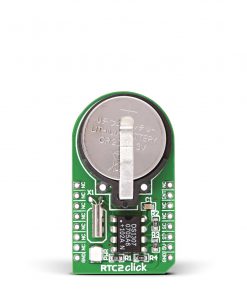 RTC 2 Click
RTC 2 Click 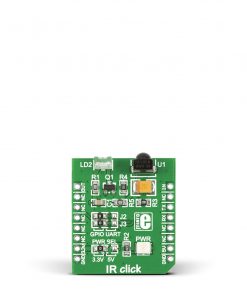 IR Click
IR Click 